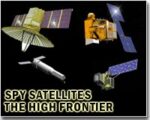At DSEI 2025 in London, AeroVironment unveiled its latest tactical unmanned aerial system (UAS), the Black Widow—a compact intelligence, surveillance, and reconnaissance (ISR) drone designed to enhance small-unit situational awareness on the modern battlefield. With a focus on portability, real-time data fusion, and autonomous operation in contested environments, the Black Widow reflects a broader shift in U.S. Army doctrine toward distributed sensing at the tactical edge.
Design Philosophy: Portability Meets Persistent ISR
The Black Widow is engineered as a man-portable micro-UAV optimized for rapid deployment by dismounted infantry squads. Weighing under 2 kg with a wingspan of approximately 1 meter (unconfirmed), it fits within a soldier’s rucksack and can be launched by hand or via a compact rail system.
AeroVironment has not disclosed full specifications publicly as of DSEI 2025; however, industry sources suggest an endurance of up to 45 minutes and an operational range exceeding 10 km line-of-sight. The airframe appears to leverage carbon composite materials for reduced radar cross-section and improved durability in austere environments.
The system is designed to function autonomously or semi-autonomously using pre-programmed waypoints or operator-in-the-loop control via a ruggedized tablet interface. It uses encrypted digital datalinks compatible with NATO STANAG standards for secure communications.
Sensor Suite and Real-Time Intelligence Delivery
The core mission payload of the Black Widow is its dual-mode electro-optical/infrared (EO/IR) gimbal sensor mounted beneath the fuselage. This stabilized sensor provides high-definition day/night imagery and full-motion video (FMV), enabling target identification at squad-relevant distances.
According to AeroVironment representatives at DSEI 2025, the drone integrates onboard AI-assisted target recognition algorithms that can flag potential threats—such as armored vehicles or dismounted personnel—without requiring constant operator input. This reduces cognitive burden on troops while accelerating decision-making cycles.
Data from the drone can be streamed directly to handheld Android Tactical Assault Kit (ATAK) devices or fed into larger C4ISR systems via mesh networking protocols. This interoperability aligns with U.S. Army Project Convergence goals focused on multi-domain operations and seamless sensor-to-shooter integration.
Tactical Role Within U.S. Army Force Structure
The Black Widow is intended to augment existing Group 1 UAS assets like the RQ-11 Raven and Puma LE but offers superior autonomy and lower visual/acoustic signature profiles. Its primary users will likely be infantry platoons operating in dispersed formations where traditional ISR support may be unavailable due to terrain or EW threats.
- Reconnaissance: Pre-mission route clearance and overwatch during movement-to-contact scenarios.
- Targeting Support: Laser designation capability is rumored but unconfirmed; however, geolocation metadata tagging is supported for indirect fires coordination.
- BDA: Post-strike battle damage assessment without exposing soldiers to hostile observation zones.
The platform’s low cost per unit—estimated under $20k USD—makes it expendable if necessary during high-risk missions such as urban reconnaissance or probing denied areas ahead of main forces.
Contested Environment Resilience
A key design requirement for modern tactical drones is survivability against electronic warfare (EW) threats such as GNSS jamming/spoofing and RF denial. While specific counter-EW features were not detailed at DSEI 2025, AeroVironment confirmed that Black Widow includes inertial navigation fallback modes and frequency-hopping spread spectrum comms protocols.
This aligns with recent U.S. Army doctrine emphasizing resilient ISR nodes capable of operating in GPS-denied environments—a lesson reinforced by Ukraine’s experience using FPV drones under heavy Russian EW interference since 2022–23.
If confirmed through testing later this year at Yuma Proving Ground or Fort Liberty’s Soldier Touchpoint events (as rumored), these resilience features could make Black Widow one of few micro-UAS platforms suitable for near-peer conflict scenarios where spectrum dominance cannot be assumed.
Procurement Outlook and Integration Pathways
The Black Widow has not yet been formally adopted by the U.S. Department of Defense but is undergoing evaluation under several rapid prototyping initiatives within PEO Soldier’s Soldier Lethality Cross-Functional Team (SL-CFT). It may also compete under SOCOM’s Tactical ISR Program of Record given its size and modularity profile.
AeroVironment has reportedly partnered with Raytheon Technologies for future integration into Joint All-Domain Command & Control (JADC2) frameworks via open architecture interfaces compliant with CMOSS/MOSA standards. This would allow plug-and-play upgrades such as SIGINT payloads or electronic decoys depending on mission requirements.
International interest has also emerged from Baltic states seeking low-cost ISR solutions adaptable to forested terrain where larger drones struggle with line-of-sight limitations. A NATO interoperability demonstration may occur during Exercise Saber Junction in late 2026 if current trials proceed successfully.
Conclusion: A Tactical Edge Enabler
The unveiling of the Black Widow UAV at DSEI 2025 underscores a growing trend toward decentralized ISR capabilities tailored for small units operating independently across complex terrain. By combining portability with advanced sensors and autonomy features resilient against EW threats, it fills a critical gap between manned reconnaissance assets and larger Group 3 drones like MQ-1C Gray Eagle Extended Range.
If adopted widely by U.S., NATO, or partner forces, systems like Black Widow could redefine how tactical commanders perceive their battlespace—enabling faster decisions based on real-time data from organic assets rather than relying solely on higher-echelon intelligence feeds prone to latency or bandwidth constraints in contested environments.
Sources
- DSEI Official Press Releases – https://www.dsei.co.uk/media-centre/press-releases
- AeroVironment Product Briefings – https://www.avinc.com/resources/newsroom
- “US Infantry Needs Organic Eyes in the Sky” – Defense News Analysis Report (April 2024)
- “Tactical UAV Resilience Against EW Threats” – C4ISRNET Feature Article (July 2024)
- “Project Convergence & JADC2 Integration Pathways” – Breaking Defense Interview Series (May–August 2024)
“`









